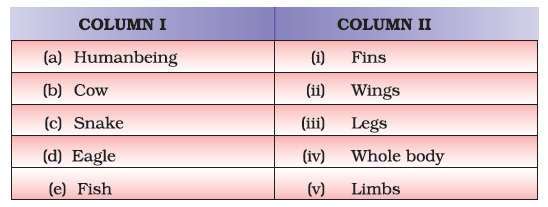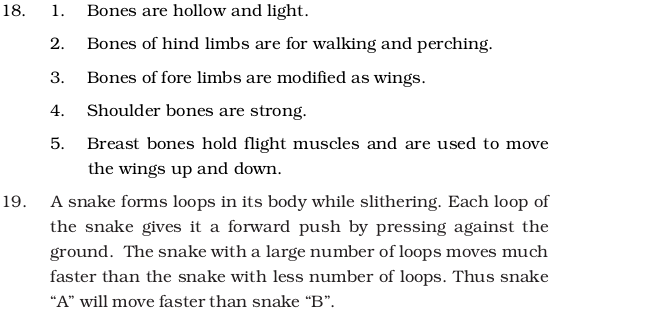Candidates can download NCERT Exemplar Class 6 Science Chapter 8 from this page. The exemplar has been provided by the National Council of Educational Research & Training (NCERT) and the candidates can check it from below for free of cost. It contains objective, very short answer type, short answer type, and long answer type questions. Along with it, the answer for each question has also been provided. From the NCERT Exemplar Class 6 Science Chapter 8, candidates can understand the level and type of questions that are asked in the exam.
NCERT Exemplar Class 6 Science Chapter 8 Body Movement
NCERT Class 6 Science Chapter 8 is for Body Movement. The type of questions that will be asked from NCERT Class 6 Science Chapter 8 are displayed in the below provided NCERT Exemplar Class 6 Science Chapter 8. With the help of it, candidates can prepare well for the examination.
Also Check: NCERT Solutions Class 6 Science
Multiple Choice Questions
- Which of the following parts of our body help us in movement?
(i) Bones
(ii) Skin
(iii) Muscles
(iv) Organs
Choose the correct answer from the option below
(a) (i) and (iii)
(b) (ii) and (iv)
(c) (i) and (iv)
(d) (iii) and (ii) - Which of the following joints is immovable?
(a) Shoulder and arm
(b) Knee and joint
(c) Upper jaw and skull
(d) Lower jaw and upper jaw - Which of the following organisms does not have both muscles and skeleton for movement?
(a) dog
(b) snail
(c) earthworm
(d) human being - Underwater divers wear fin-like flippers on their feet to
(a) swim easily in water.
(b) look like a fish.
(c) walk on water surface.
(d) walk over the bottom of the sea (sea bed). - Snail moves with the help of its
(a) shell
(b) bone
(c) muscular foot
(d) whole body - How many muscles work together to move a bone?
(a) One
(b) Two
(c) Three
(d) Four
Very Short Answer Type Questions
- Name the type of joint of your hand which help you to grasp a badminton racquet.
- What would have happened if our backbone was made of one single bone?
- Provide one word answers to the statements given below.
1. Joint which allows movement in all directions.
2. Hard structure that forms the skeleton.
3. Part of the body with a fixed joint.
4. Help in the movement of body by contraction and relaxation.
5. Bones that join with chest bone at one end and to the backbone at the other end.
6. Framework of bones which gives shape to our body.
7. Bones which enclose the organs of our body that lie below the abdomen.
8. Joint where our neck joins the head.
9. Part of the skeleton that forms the earlobe. - Write the type of joint which is used for each of the following movements:
(a) A cricket bowler bowls the ball.
(b) A girl moves her head in right and left direction.
(c) A person lifts weights to build up his biceps.
Short Answer Type Questions
- Match the name of the animals given in Column I with its body parts used for movement given in Column II.

- Given below is a list of different types of movements in animals.

Write the types of movements seen in each animal.
- Boojho fell off a tree and hurt his ankle. On examination the doctor confirmed that the ankle was fractured. How was it detected?
- Bones are hard structures and cannot be bent. But, we can still bend our elbow, knee, etc. How is this possible?
- Which type of movement would have been possible if
(a) our elbow had a fixed joint.
(b) we were to have a ball and socket joint between our neck and head. - Earthworms are known as ‘farmer’s friends’. Why?
Long Answer Type Questions
- (a) Unscramble the jumbled words and write them in the blank spaces provided.

(b) Read the following paragraph and fill in the blanks using the words you unscrambled.
- How is the skeleton of a bird well-suited for flying?
- In Fig. 8.2 there are two snakes of the same size slithering on sand. Can you identify which of them would move faster and why?

Click here to download NCERT Exemplar Class 6 Science Chapter 8 Body Movement.
Answers







To get study material, exam alerts and news, join our Whatsapp Channel.


